
© Marc J. Franklin. (Click image for larger version)
The Little Island Dance Festival is now over, but just before the opening Susanna Sloat caught up with co-curators Ayodele Casel and Torya Beard to talk all about their philosophy and the ideas behind the festival and all they do. (For information sadly none of the festival performances have been open to review)
Little Island Dance Festival
15 – 19 September 2021
littleisland.org
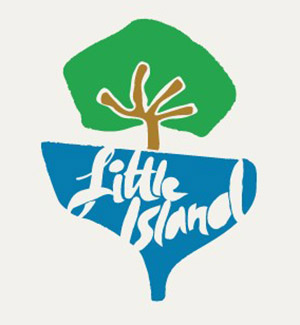
© Little Island. (Click image for larger version)
Little Island, which officially opened in May, is something new, but in the works for years. It was conceived and funded by the Diller-von Furstenberg Family Foundation (Barry Diller, Diane von Furstenberg), still its primary funders, with support from the City of New York, and is now part of Hudson River Park. On the site of a former pier between West 13th and West 14th streets, the mounded hills of Little Island sit on huge undulating tulip-shaped supports designed by the UK’s Heatherwick Studio, engineered by Arup, with landscaping by Signe Nielsen. The almost 700 seat Amphitheater is U-shaped, allowing for intimate sight lines. The Glade has about 200 places to sit, many on the grassy hill above the few rows of seats, and there is an additional, informal performing space called The Play Ground next to the food stalls and tables. Performances and activities on some days can run from 10am to after 10pm. Most are free, though some tickets in The Amph have charges.
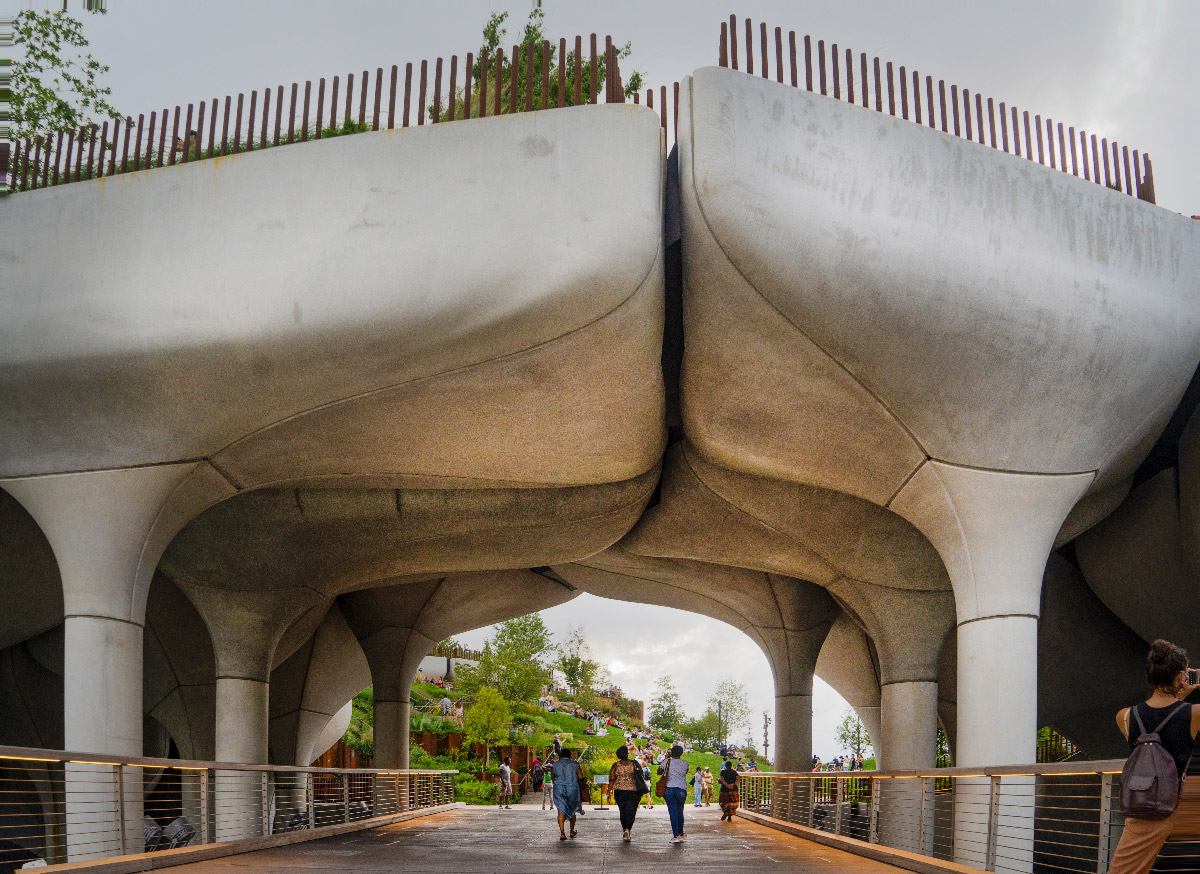
© Don Burmeister. (Click image for larger version)
The dance festival’s offerings encompassed an evening of kathak and tap; Ayodele’s own show, Ayodele & Friends, which saluted her Afro-Puerto Rican background; a show by African-modern fusion master Ronald K. Brown/Evidence; a celebration of National Dance Day with four choreographers; “Don’t Call It A Comeback,” five mature dancers including Torya Beard; and a showcase, “They Got Next: The Next Generation of Dance Leaders.” And that’s just what was playing in The Amph. There was lots more in The Glade and The Play Ground.
I had the privilege of interviewing Torya Beard and Ayodele Casel on Zoom on September 15, 2021, the day the five day Little Island Dance Festival began. They illuminated what went into assembling the festival, and their ideas of giving and guiding that animate how they live and work and contribute to the lives of many others.
What I’m particularly interested in his how you put this – the Little Island Dance Festival – together.
Ayodele: It happened over several meetings with Julia Kraus, the producer. At some point in the meetings I identified what was important to me in my own work and in general what I like to see. For me, that is artists who are really rooted in their art form, are really bold, and, of course, percussive dance is a big theme. I believe that it’s an art that doesn’t get a lot of play or recognition in festivals. I was interested in artists who are really great storytellers, in their dance, or how they use their life to just to share that with audiences. That’s what I was really interested in.
In your show in September 2019 I know you told some of your own stories. Will you be doing that at your show tomorrow at Little Island?
Ayodele: What I like about tomorrow’s bill is that I’ve invited so many great artists to be with me and they have their own stories and contexts to give to what they are doing. And I love that. I think I am going to tell one story about my grandfather and Latin music. For me, I think it’s such a privilege as an artist to share your experiences with people. What I like when I share my experiences is that it allows other people to consider giving weight to their own.

© lidf. (Click image for larger version)
How did you pick the participants? Did you know everyone’s work or were you looking to try and find people who would match your ideas?
Torya: There was a submission process for this festival, open submissions. So when we first started working on it we had a ton of submissions to review. Some of those people who submitted are in the festival. As we figured out what we wanted the festival to feel like, what is at the core of what we were doing, then we were able to brainstorm some ideas about who we wanted to invite. I feel like it was important to invite people who are not always the first people to be invited, particularly because of what’s required to support their work, like having a proper floor, like having proper sounds. We also felt strongly that we wanted music to be represented as well. When we kind of had the line-up, like a first draft of it, I wanted to make sure that we had practitioners at each end of the spectrum, age-wise. Putting young people in the amphitheater at 8pm, a slot that young people sometimes are not invited to have was important, book-ending it with older artists as well. There are people of all ages throughout, but dedicating those programs to them was important.
Did you two have to program The Glade as well?
Torya: It’s also The Play Ground, too. There’s a lot of pop-up performances.
Ayodele: A very dear mentee of ours named Jared Alexander is going to be popping up somewhere in the park. I thought about him because he goes to Central Park with his tapboard and he just goes and plays with his little Bose speaker and basically gives the people a show. I thought how do we give a space for that so that Little Island becomes like New York City, like the whole city, just in this park. Also, I would say that Barkha Patel who is opening the festival is an artist [in kathak] that we met a few years ago at another dance festival. We’re Instagram friends. And one day she was sharing her work and I said her work is so beautiful, we should ask her if she wanted to be a part of it. Thankfully she said yes.
Torya: Tomoe Carr is a younger dancer, a freestyle dancer, who’s doing a pop-up, but she’s also performing in the Amph. So some people you’ll see more than once. That was something interesting to play around with, giving artists an opportunity to show their work and to tailor their work for different environments.

© Don Burmeister. (Click image for larger version)
Ayodele, you are the artist in residence at Little Island. Does that mean you will be doing more past this festival?
Ayodele: I hope so. The bulk of our time has been spent curating the dance festival, but I feel like I’ve also been supporting their vision about the infrastructure. One of our first meetings was about the flooring. I made a suggestion about the floor and that was the floor that was purchased.
Torya, what’s happening with you after the festival?
Torya: The day after the festival we leave to go to Cambridge, where we are presenting Chasing Magic, which we created as a digital offering for the Joyce this past spring. We are doing a stage production of that at American Repertory Theater. I always have a lot of things coming because I’m the executive director of A BroaderWay Foundation and I’m also the artistic director of a charter school system called Excellence Community Schools. Those things are always churning and then there are various creative projects with Ayodele and otherwise.
I notice, Torya, that you’re going to be dancing again after a long time off and that you have rheumatoid arthritis. How is it going? How does it feel?
Torya: Thankfully, this week it feels pretty good. There was a time when it was really challenging for me to walk, but now I feel pretty good.
You have a lot of variety, not just percussive dance. You have Ron Brown – did you just pick him because he’s great or is there another tie in?
Torya: We have a long history with Ron. I was a member of Evidence for years and then did PR for Evidence for maybe seven years or so. And now we’re starting a new chapter as collaborators. He was a part of Chasing Magic, the film we made. He and Ayodele have been threatening to collaborate for at least eight years. (Ayodele: It’s true!) I don’t even know how to describe how much influence and how much a part of my artistic life, and also my other professional life, Ron and Arcell [Cabuag, associate artistic director of Evidence] both are.
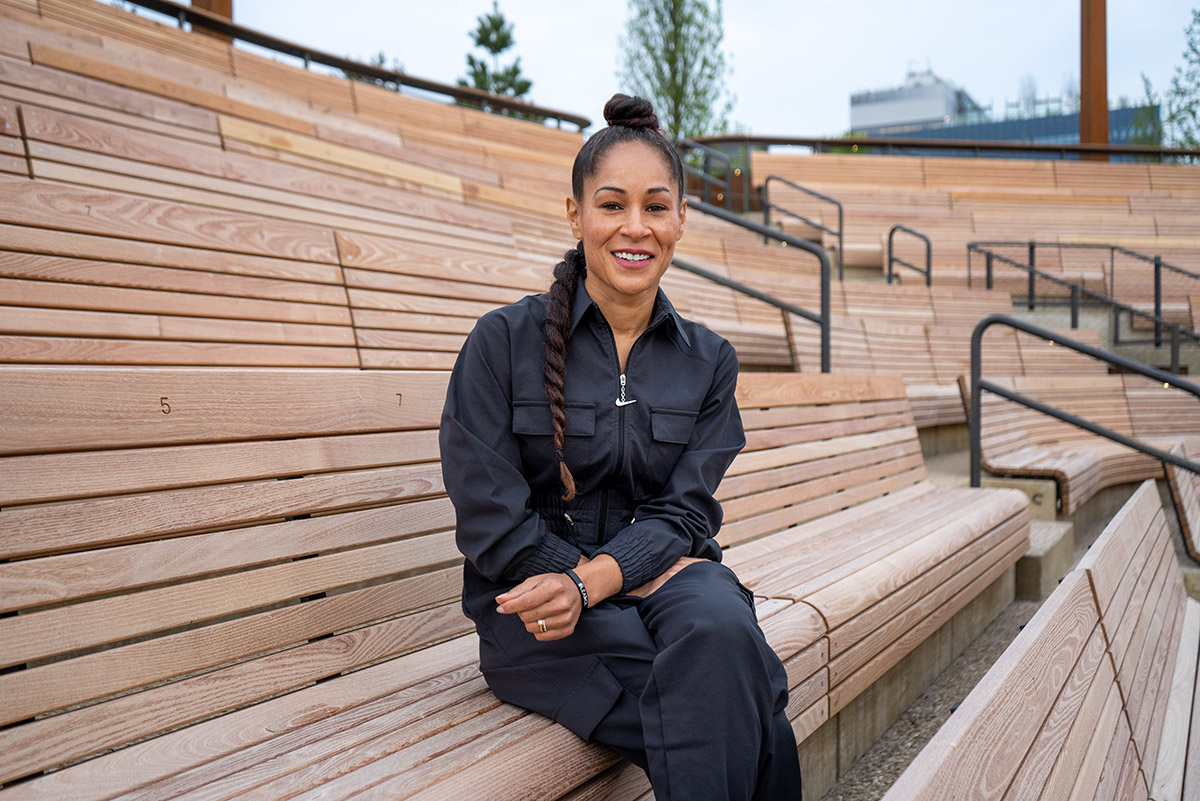
© Obed Obwoge. (Click image for larger version)
Ayodele: I love Ron. I love him dearly and have such respect for him as an artist. I love him as a human being. He’s so generous. The thing we did for Chasing Magic was put together so quickly. I can’t wait to continue and explore that collaboration. I have this piece that’s all a cappella that sits in a 6/8 rhythm. I call it Africa. I love the music of it . I said to Torya, I would love to have him dance to what we’re doing as a soundtrack.
You and Ron Brown have both worked with Arturo O’Farrill. Is that a further connection?
Ayodele: I’m so lucky. I think that God is shining upon me all the time. I met Arturo independently of Ron and I felt like I had known him forever. It doesn’t happen often, it doesn’t happen often where musically you just kind of connect. And it’s fun and playful. He’s amazing. And then I found out that he and Ron had collaborated as well and just how steeped into the dance world Arturo is. He’s a genius.
What about other participants in the festival that are less famous that I haven’t heard of?
Ayodele: Michela Marino Lerman I think is a really unique and powerful artist. And I’ve known her since she was twelve years old. I feel like it’s family, but I was also equally intrigued by programming House of Xtravaganza and Tomoe Carr and Michiyaya Dance.
Torya: Anya Clarke-Verdery and Mitsuko Clarke-Verdery are the artistic directors of Michiyaya. I’ve been watching them grow. Their perspective is so interesting, so visually striking and I just find it so compelling. They’re creating a performance for the Play Ground – it’s a late night piece.
I’d like to spend a bit of time talking about the four choreographer commission. I was thinking how can we as a community figure out how to all rise together. What if we worked together more? What if we really saw collaborative opportunities as an opportunity for everybody’s voices to be heard. And how can we facilitate that? Ayodele has this workshop that she leads with young people we work with at A BroaderWay. What if we use that as the grounding for a collaboration with four very accomplished choreographers who stand beautifully on their own. What would happen if they came together to create a single work, but all together. So Josh Prince, Ray Mercer, Darrell Grand Moultrie, and Tiffany Rea-Fisher all said yes and they are all choreographing to one of the four prompts Ayodele uses. When we talk about our personal mission statements, one way of arriving at a succinct statement is to answer all of these four prompts and put them together which is what we do with the young folks at A BroaderWay. Do you want to say what the prompts are, Ayodele?
Ayodele: I am. I believe. I strive for. I fight for. The young people we work with at A BroaderWay Foundation are primarily Black and Latino. One of the things that I want them to start to practice is the idea of defining yourself and being confidant enough to articulate that in front of anybody. That mission will change as you grow, as you get new experiences, but for right now….
What’s yours?
Ayodele: If I were to say one on the spot right now, I would say that I am a Black and Puerto Rican proud woman who believes that our stories matter, and I fight for the ability to share that fully in every circumstance and every situation that I’m in, something along those lines.
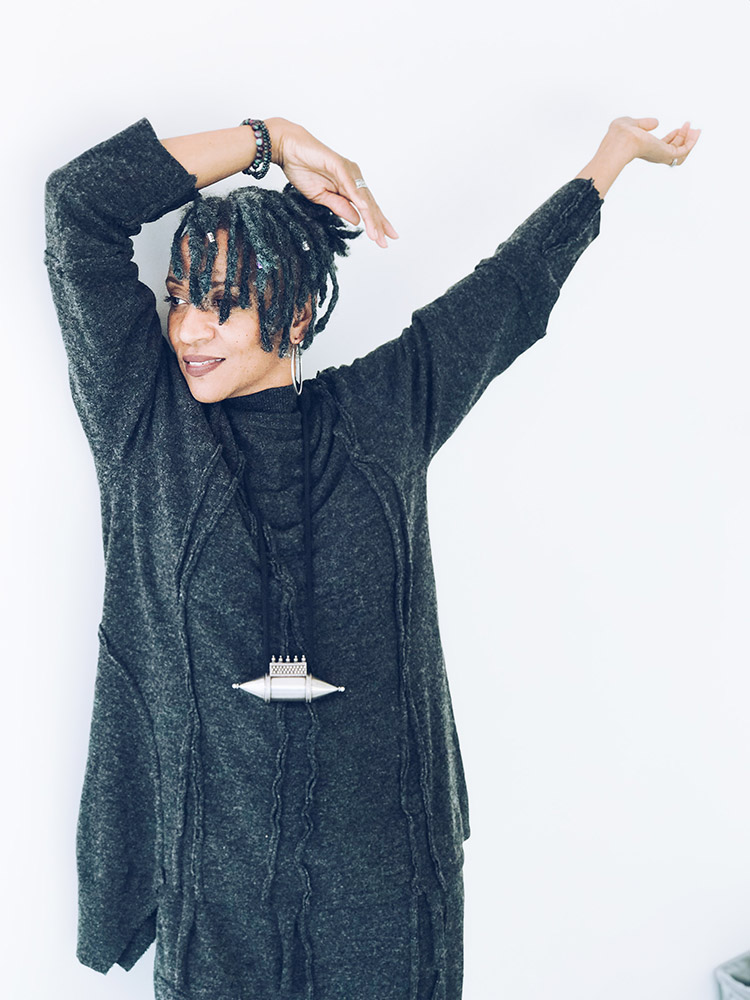
© Ayodele Casel. (Click image for larger version)
Torya, do you have one?
Torya: Oddly enough, I have never done this exercise. I have been a witness to it many, many times. But I would say… (Ayodele: Give it a go.) Let me see – I’m writing it out, not the whole thing. I would say I am the daughter of party people, of proud people, of resilient people. I believe that centering our humanity in every circumstance makes us better. I strive to have empathy, to lead with empathy so that I can consider where other people are coming from and I would hope that they would consider where I am coming from. I fight for young folks to have the privilege of being fully expressed and respected and cared for.
That was great!
Ayodele: That’s so beautiful! On the spot!
Torya: It’s really hard to talk about my artistic work without talking about this work that I have done with young people and how they’ve opened up so much for me.
Do any of these young people you have been working with have a connection with this years festival?
Torya: Yes. One of our graduates, Fanta Ballo, is a poet. She grew into this beautiful poet. She just self-released her own book of poetry this year. She’s going to be on the “They Got Next” program with the young performers. She’s doing a duet with Tomoe Carr. We linked them up together. They performed something earlier this summer on a program I curated for Lincoln Center. We’re also bringing in Eddie Hernandez who is a 14-year-old Latin dancer.
Ayodele: It’s really kind of surreal and very exciting that the festival is here, something that we’ve been preparing in the last year, mostly in this manner, over Zoom, and to have it exist in real life, in real time, with real people there to experience it in the moment is so beautiful.
Thank you both very much – and have a great festival and beyond!






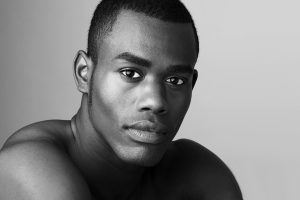

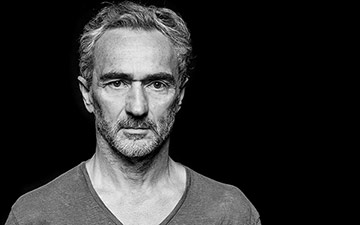


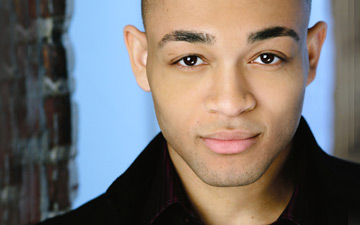





You must be logged in to post a comment.